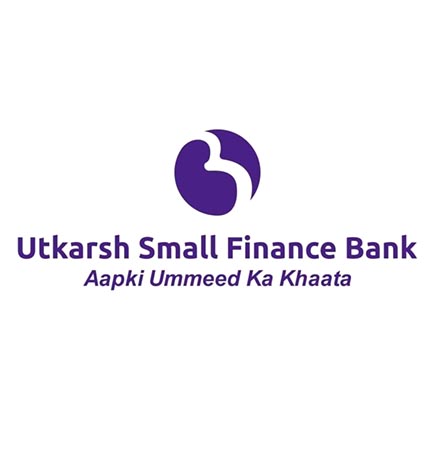| COMPANY NAME | UTKARSH COREINVEST LTD |
|---|---|
| NATURE OF BUSINESS | BANKING |
| ISIN NO | INE396P01012 |
| FACE VALUE | Rs.10/- |
| PROMOTERS | Mr. V.S SAMPATH |
| COMPANY WEBSITE | www.utkarshcoreinvest.com |
| YEAR OF EASTBLISHMENT | 2009 |
| REGISTERED ADDRESS | S-24/1-2, Fourth Floor, Mahavir Nagar, Orderly Bazar, Near Mahavir Mandir, Varanasi -221002(U.P.) India |
BOARD OF DIRECTORS
Mr. G. S. Sundararajan ( Chairman )
Mr. Ashwani Kumar (Managing Director)
Mr. Atul Independent ( Director )
Utkarsh CoreInvest Limited (old name – Utkarsh Microfinance Ltd) is the holding and promoting company for “Utkarsh Small Finance Bank Ltd”,is an Indian scheduled commercial bank licensed by the Reserve Bank of India under the Banking Regulation Act, 1949. The Bank was included in the Second Schedule to Reserve Bank of India Act, 1934 vide RBI Notification dated October 4, 2017, followed by a Gazette Notification published on November 7, 2017
Incorporated in 2009 as a microfinance institution, the Bank is headquartered at Varanasi, Uttar Pradesh.
The microlender, as of 2013, had its operation in north India in 29 districts of Uttar Pradesh, Bihar, Madhya Pradesh, Uttarakhand, Delhi and Himachal Pradesh with 123 branches and around 285,000 active clients.
The full banking services of the Bank were launched by the Honourable Prime Minister of India on September 22, 2017.[As of 2017, the Bank had its operations in UP, Bihar, Jharkhand, Chhattisgarh, Madhya Pradesh and some portions of Haryana and Uttarakhand., Utkarsh Small Finance Bank Limited, as of 2019, has annual revenue of Rs 939.1 crore, Net Profit of Rs 93.9 Crore and a Total Equity of Rs 772.8 Crore.
Over the years, the Bank has attracted investors like Commonwealth Development Corporation, Norwegian Microfinance Initiative (NMI),HDFC Ergo General Insurance, HDFC Standard Life, ICICI Prudential Life Insurance, RBL Bank Ltd., Shriram Life Insurance, Small Industries Development Bank of India (SIDBI) and private equity funds such as Arpwood Investments, Faering Capital, Aavishkaar Goodwell and Lok Capital
To provide affordable & accessible banking services which are process centric, technology enabled and people oriented resulting in reliable, scalable and sustainable institution facilitating socioeconomic change.
The company typically offers 3 kinds of loans:
- JOINT LIABILITY GROUP (JLG) LOANS
- INDIVIDUAL BUSINESS LOANS
- TWO-WHEELER LOANS
Financial Analysis ( ALL IN CR )
| PARTICULARS | 2021-22 | 2020-21 | 2019-20 |
|---|---|---|---|
| REVENUE | 1572 | 1368 | 1019 |
| TOTAL INCOME | 2034 | 1725 | 1406 |
| EPS | 0.70 | 1.46 | 2.49 |


